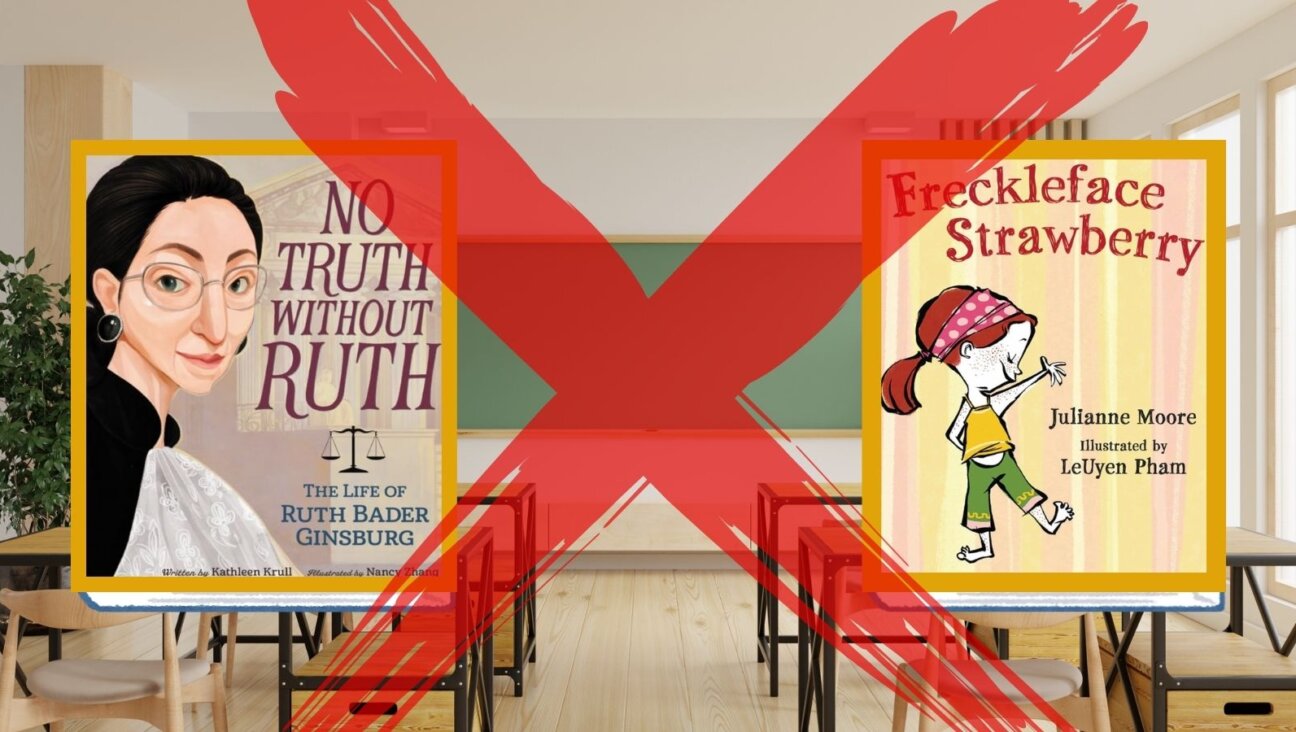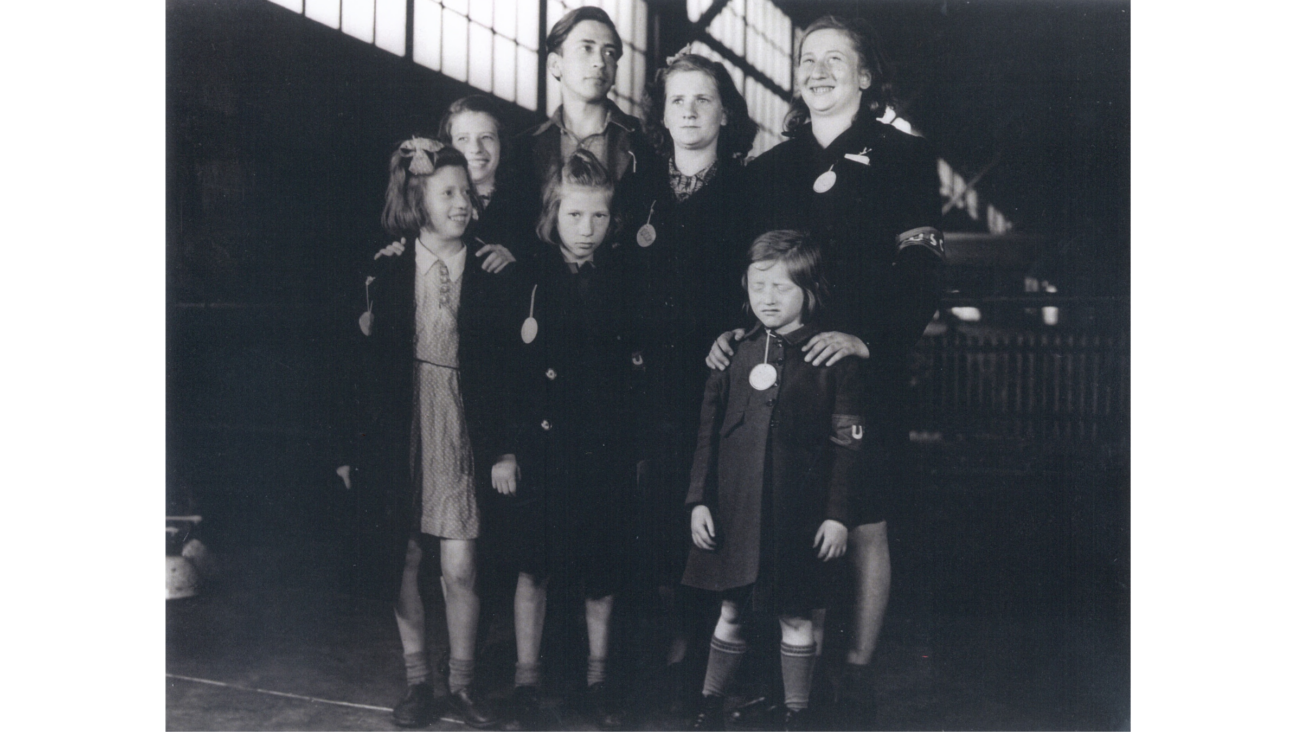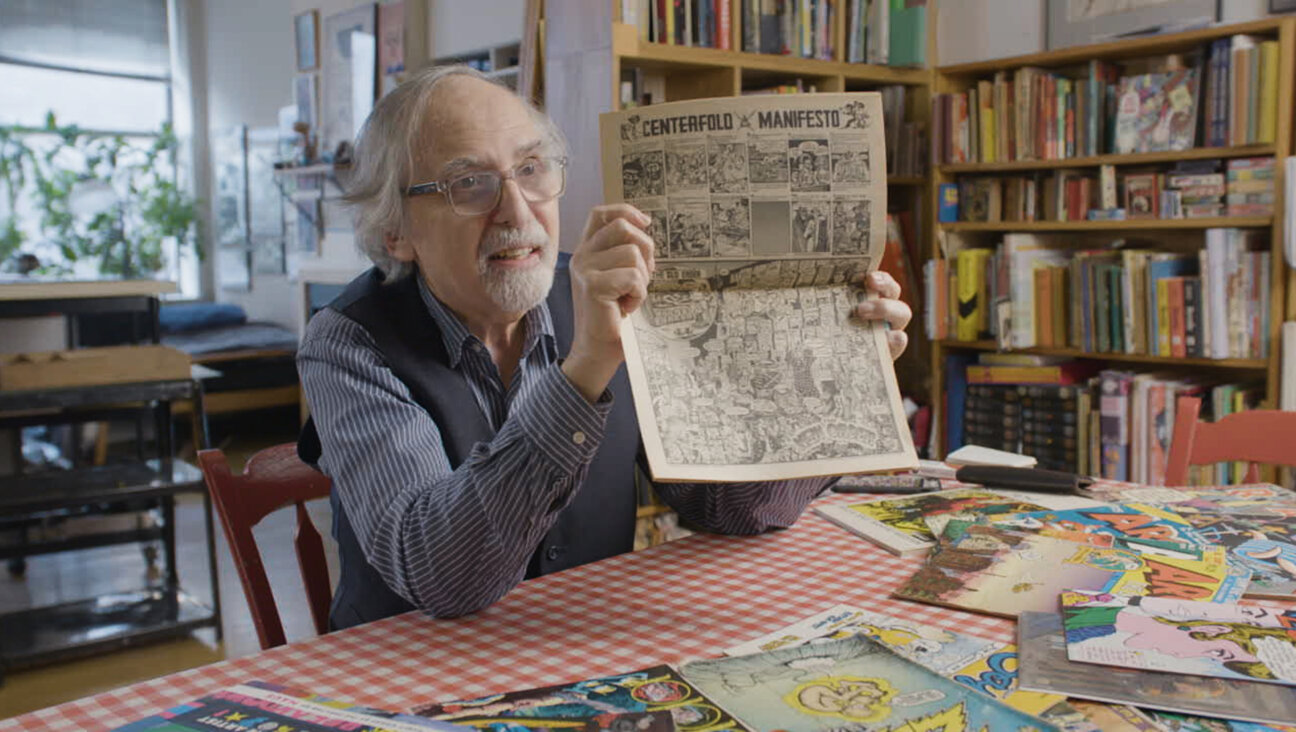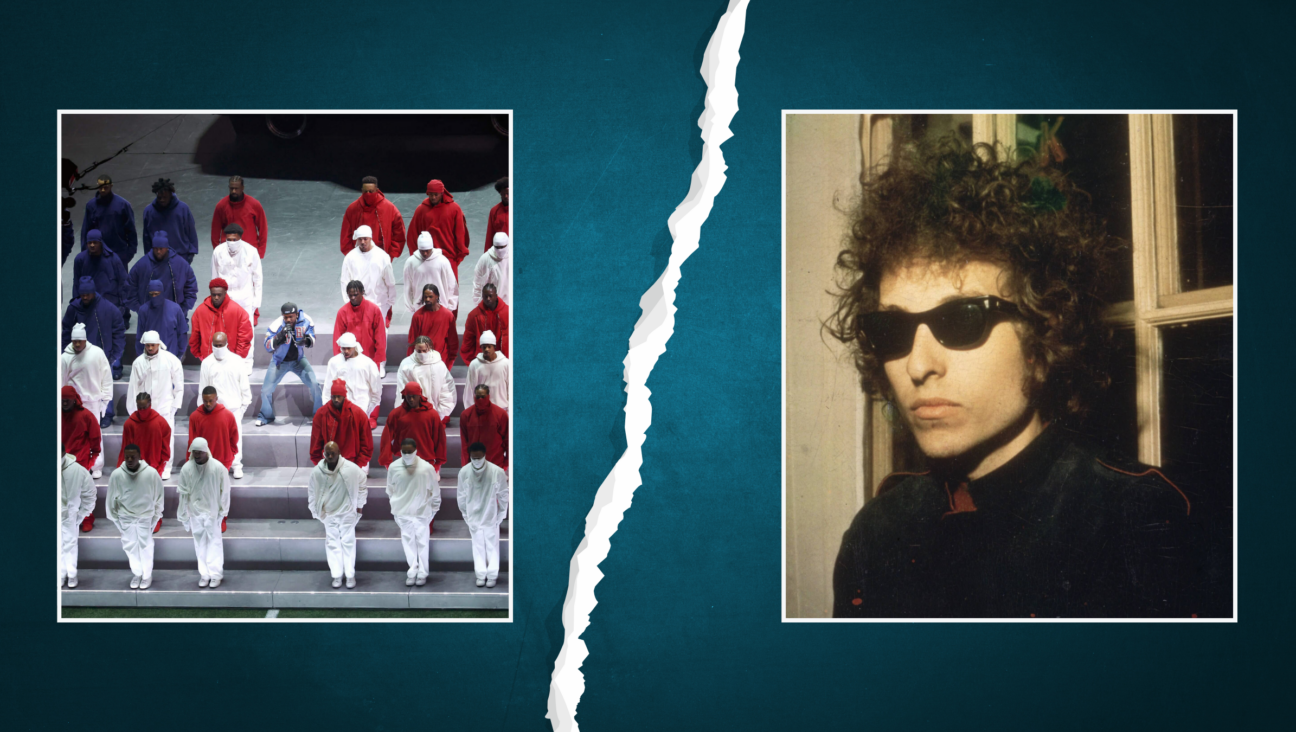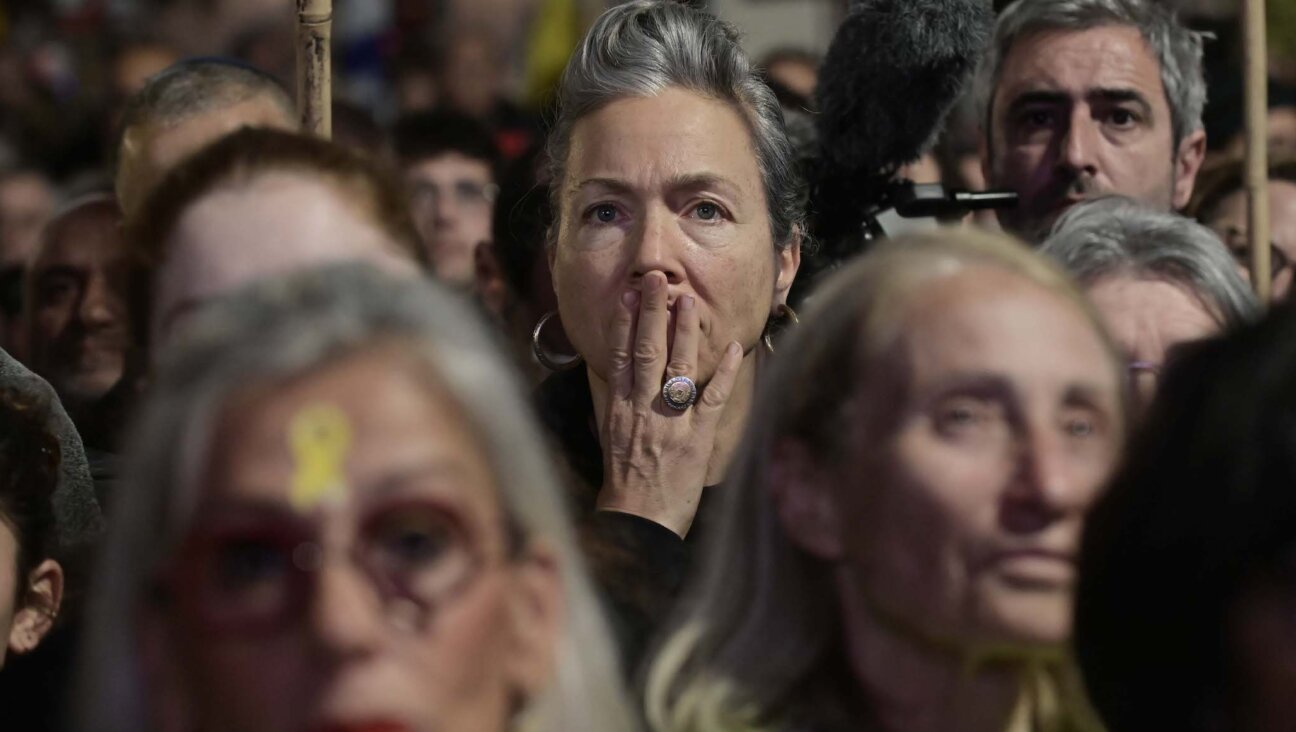An Offering To the Priests Of Yiddish
The Cross and Other Jewish Stories
Lamed Shapiro
Yale University Press, 226 pages, $30.
At the end of “White Challah,” one of 16 stories included in Lamed Shapiro’s posthumous and definitive “The Cross, and Other Jewish Stories,” the aftermath of a pogrom is described in the following manner: “Pillars of smoke and pillars of flame rose to the sky from the entire city. Beautiful was the fire on the great altar. The cries of the victims — long-drawn-out, endless cries — were sweet in the ears of a god as eternal as the Eternal God. And the tender parts, the thighs and the breasts, were the portion of the priest.”
Shapiro’s last sentence here makes reference to Leviticus’s instruction that a portion of every sacrifice should be offered unto God, while the remainder should go to sustain the priestly class, the sons of Aaron, Moses’ brother.
While in Europe Yiddish writers I.L. Peretz and Sholom Aleichem were revered as populist masters, and while America exalted Isaac Bashevis Singer to international fame, the work of Lamed Shapiro was often read as an offering to a smaller, if fanatic, critical cult: His stories are portions of violence and suffering set aside, as if to gorge with experience and language the most discerning of Yiddishist priests.
Levi Joshua Shapiro was born in 1878 in the shtetl of Rzhishchev, Ukraine, southeast of Kiev. He died in 1948, sick and impoverished, a mad and legendary figure living in a friend’s garage in Los Angeles. This collection, which is composed almost wholly of masterpieces, is one of a dozen books published by the New Yiddish Library Series of Yale University Press; their work is to be lauded, and read. Here, between the altars of two covers, is the burning best of one of Yiddish’s greatest writers — rendered in intelligently exacting translations.
“The Cross” begins with the title story: a narrative told in pastoral America about the terrors of Russia under the tsars. The eponymous cross is gashed, by “a little goy,” into the forehead of the tale’s Jewish teller — a mark of Cain he must bear even in his stateside reincarnation as martyr, a reminder set between his eyes as if the phylactery of a former faith. The five stories that follow in the book’s first section, “Pogrom Tales,” soon make such macabre seem mundane: mothers are raped; children are murdered; a Russian soldier, obsessed with Jews and, perhaps, with Jewish cookery, scents and tastes, sinks his teeth into the shoulder of a Jewish woman, mistaking her young flesh for the titular “white challah,” in what seems to be a literary transubstantiation of the Eucharist, a heretical inversion of the ritual of communion: the flesh made bread, instead of the bread made flesh.
“Pogrom Tales” concludes with what’s widely regarded as Shapiro’s greatest story, “The Jewish Regime,” about the physical, and spiritual, liquidation of a shtetl — its dispersion, and the ensuing emotional, and religious, confusion. Its translation here, by Heather Valencia, is more faithful than most previous offerings, though less poetic, less in tune with the cantillation of early century’s vanguard prose. Compare the following lines, set upon the New Year just prior to the outbreak of pogrom: Valencia writes, “Then within the depths of the Ark a sound is born and increases and spreads through the whole synagogue. It is the long ascending note of the shofar, harsh, bitter and strong, like the breath of frost itself: T-e-r-u-a-h!” Whereas Curt Leviant, whose 1971 translation was previously, perhaps, the most widely read, strips the original text of the shofar, or ram’s horn (which, back then, an American Jewish readership might have understood as implied), and offers: “Then a sound was born in the depths of the Ark and started growing. Throughout the synagogue was heard a sharp, bitter and powerfully-increasing note, sounding like the trumpet-flourishing breath of frost.”
These are two different translations, for two different readers. Whereas Valencia, though precise, succeeds in keeping Shapiro more explanatorily, and so contextually, cultic, or Jewish (all Hebrew words here are maintained in transliteration; the endnotes are laudable, too), Leviant, taking instruction from many other American translators of Yiddish in the 1950s an ’60s, attempts to acculturate, turning Shapiro into the rightful, though abstracted, peer of Franz Kafka, Bruno Schulz and, amid the Russians, Dmitri Pisarev and Andrei Platonov — rendering him into a proper, and pioneering, writer of “Europe.”
The following section, titled “The Old World,” assays the oftentimes hidden Jewish life of that continent, featuring such masterpieces as “Smoke,” which Shapiro dedicated to Peretz, and “Eating Days,” about the hunger — or, in another sense, the existential appetite — of a forlorn yeshiva student (essen teg, or “to eat days,” refers to the practice of assigning a boarding yeshiva student certain days on which to take a meal in the house of a local). The two lesser-knowns in this section, “Between the Fields” and “Myrtle,” are prose-poesy, with even more pronounced relationships to Russian nihilist, or even French Impressionist, writing than with the naturalist “Die Yunge” school of Yiddish writers in whose roll-call Shapiro is often included.
The book’s last section, titled “The New World,” contains its greatest surprise: Shapiro, whose peregrinations took him from Russia, through Europe, to New York (where he worked for the Forward), Chicago (where he owned a restaurant for a time), then, ultimately, to Los Angeles (where he worked away his last days failing to invent a process for the development of color film that, unbeknownst to him, had already been invented, in Germany), retained his muse in America. “At Sea,” the first and longest story here, is miraculous proof: This narrative of an Atlantic crossing, and the shipboard crises involved, is, to my mind, the greatest story in the Yiddish language — making Singer’s “Gimpel the Fool” seem foolish and gimped, and even Peretz’s “Bontsha the Silent” seem muted itself in its folksy and didactic importance.
“At Sea,” especially in Joseph Sherman’s excellent translation, demands to be quoted, at length:
“Happy is the man of learning! Firstly, he knows everything, and secondly, he knows what the sea is. The sea is water. Water and nothing else. Had we a beaker holding so many and so many cubic centiliters of water, we could replicate an ocean. I, however, am no learned man, so I still dream that when the Master of the Universe is left all alone, face to face with His great creation, when no single human eye, let alone the eye of a man of learning, roves over the vast expanses of water, then He, if it were possible, loses heart at what He himself has created. And in this way, Creator and created stare at each other, and both are silent, and the sound of their silence stretches from one end of the universe to the other, enduring until one stronger than either of them arrives: the man of learning with his vessel of so many and so many centiliters’ capacity.”
Captured here, as if a message-in-a-bottle, is the author himself: despite any rhetorical modesty, a man of learning — a scholar of the heart. Once a rare and priestly portion now offered and in hardcover to the general public, Shapiro’s work can also be read as if a vessel of “so many and so many centiliters’ capacity” — not as a replacement for this world, nor as a re-imagining of the “Old World,” but as a container for them both, a preciously primal vessel not only of Jewish but of universal experience.
Joshua Cohen is an author of two books appearing in 2007: “Aleph-Bet: An Alphabet for the Perplexed,” illustrated by Michael Hafftka, and “A Heaven of Others.”
A message from our Publisher & CEO Rachel Fishman Feddersen

I hope you appreciated this article. Before you go, I’d like to ask you to please support the Forward’s award-winning, nonprofit journalism so that we can be prepared for whatever news 2025 brings.
At a time when other newsrooms are closing or cutting back, the Forward has removed its paywall and invested additional resources to report on the ground from Israel and around the U.S. on the impact of the war, rising antisemitism and polarized discourse.
Readers like you make it all possible. Support our work by becoming a Forward Member and connect with our journalism and your community.
— Rachel Fishman Feddersen, Publisher and CEO







